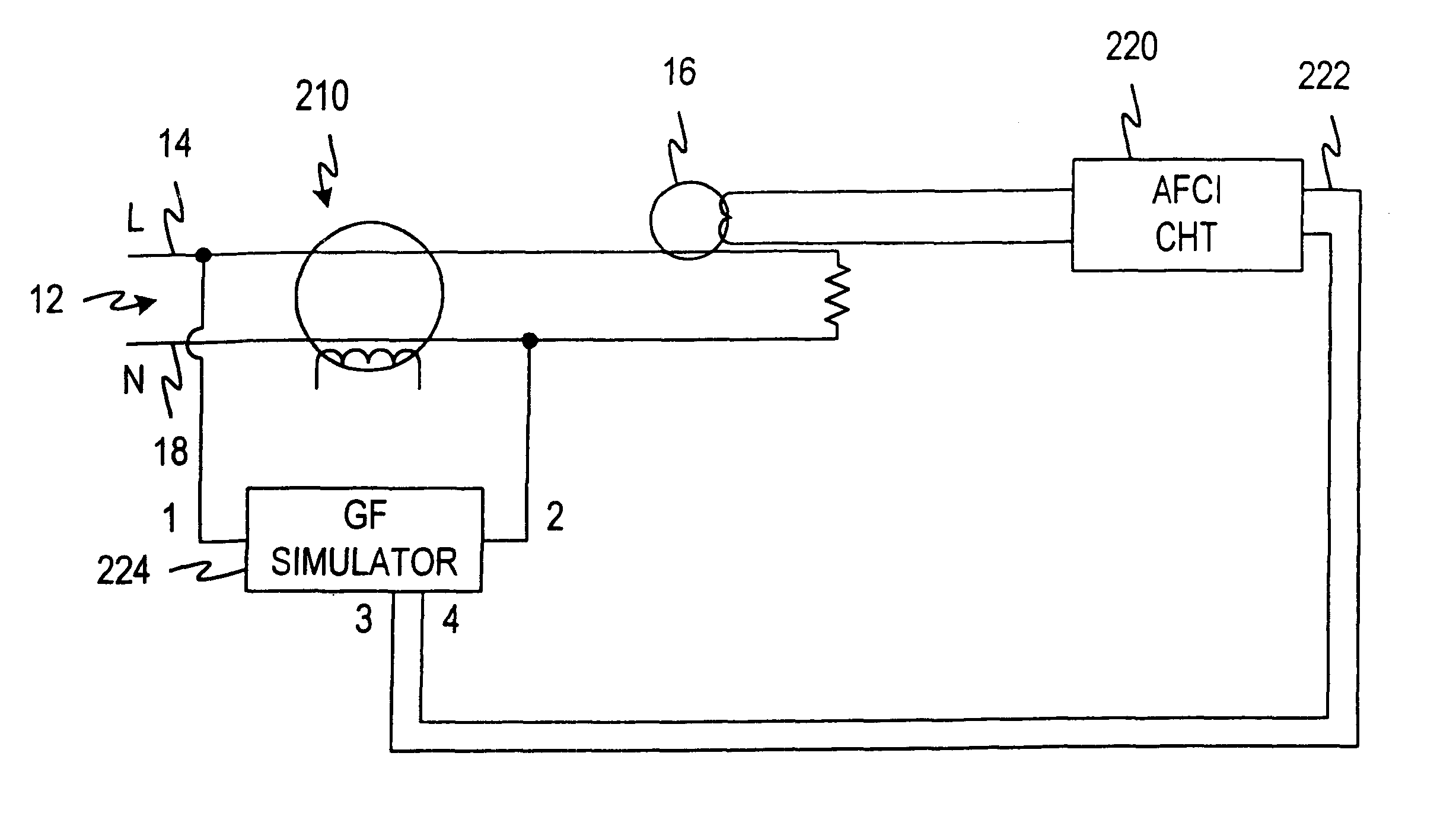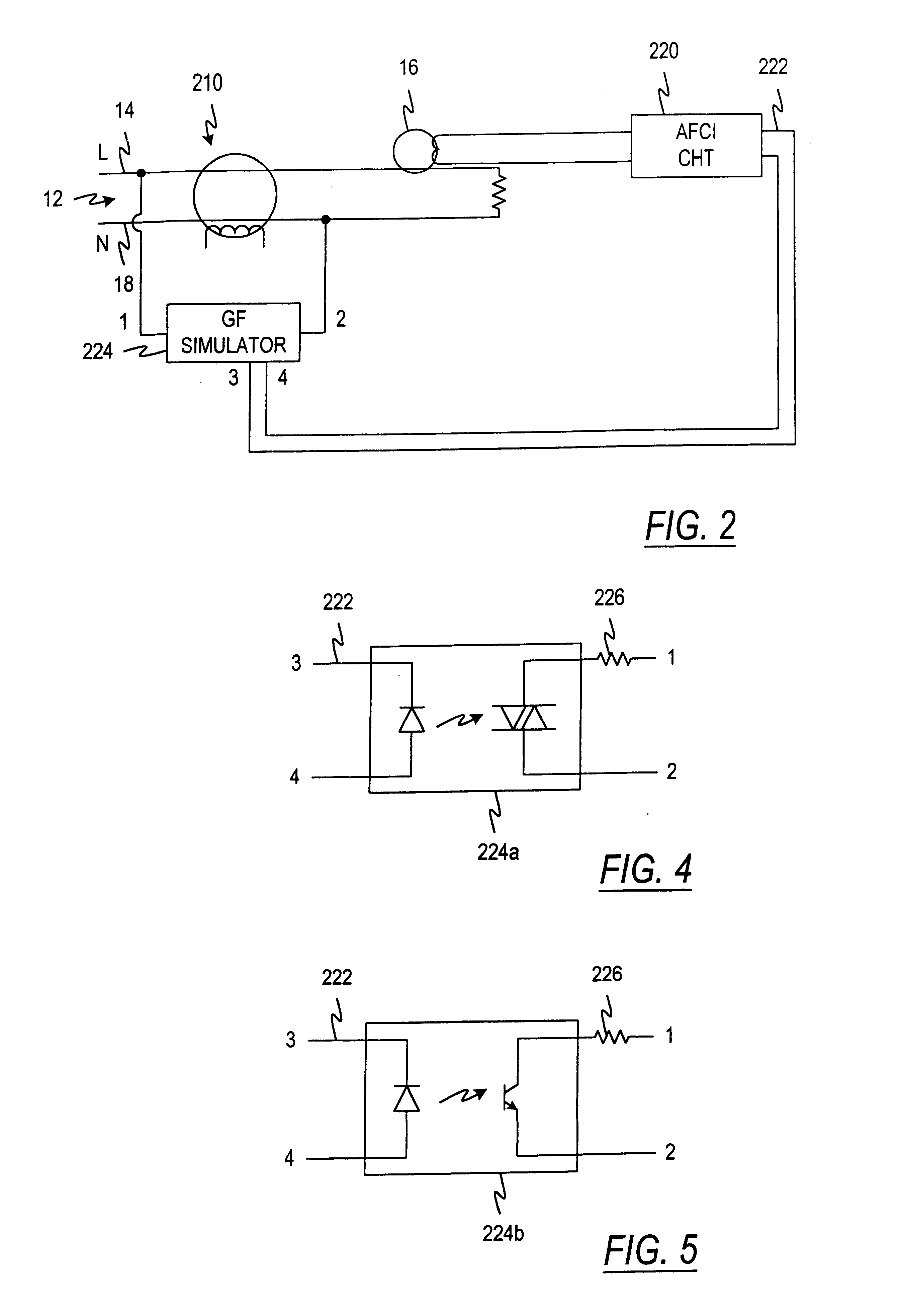Arc fault circuit interrupter
a fault circuit interrupter and circuit breaker technology, applied in the integration of power network operation systems, emergency protective arrangements for limiting excess voltage/current, sustainable buildings, etc., can solve problems such as "ticking faults", circuit breakers interrupting electric circuits, and conventional circuit breakers tripping, etc., to achieve reliable detection of arc fault conditions
- Summary
- Abstract
- Description
- Claims
- Application Information
AI Technical Summary
Benefits of technology
Problems solved by technology
Method used
Image
Examples
Embodiment Construction
Referring now to the drawings in initially to FIG. 1, there is shown in block form a novel electrical fault detector system in accordance with one embodiment of the invention, and designated generally by the reference numeral 10. In the illustrative example, the fault detection system 10 is associated with an electrical circuit such as a 120 VAC circuit 12 which is to be monitored for faults. Of course, the invention is not limited to use with a 120 VAC circuit. At least one sensor 16 is provided in association with the 120 VAC circuit 12 for producing a signal representative of a signal condition, such as power, voltage or current in the 120 VAC circuit 12. In the illustrated embodiment, this sensor 16 comprises a current rate of change (di / dt) sensor. A line conductor 14 of the 120 VAC circuit 12 passes through the rate of change (di / dt) sensor 16 which produces a current input signal representative of the rate of change of current flow in the line conductor 14.
The di / dt sensor 16...
PUM
 Login to View More
Login to View More Abstract
Description
Claims
Application Information
 Login to View More
Login to View More - R&D
- Intellectual Property
- Life Sciences
- Materials
- Tech Scout
- Unparalleled Data Quality
- Higher Quality Content
- 60% Fewer Hallucinations
Browse by: Latest US Patents, China's latest patents, Technical Efficacy Thesaurus, Application Domain, Technology Topic, Popular Technical Reports.
© 2025 PatSnap. All rights reserved.Legal|Privacy policy|Modern Slavery Act Transparency Statement|Sitemap|About US| Contact US: help@patsnap.com



